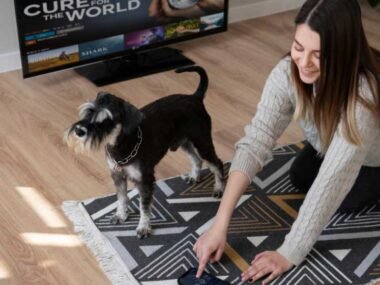The field of architecture together with interior design experiences revolutionary change through 3D modeling, notes Mark Thomas Durham Services.
The digital tools now drive architectural and interior design toward fundamental changes in their landscape. The base of this revolutionary change rests on 3D modeling design where creators achieve a new level of space visualization along with precise manipulation of realistic design elements. This technological innovation functions beyond being a mere flashy enhancement because it is revolutionizing the entire process of building space design and construction and user experience.
The Process Of Visualizing Unconstructed Spaces Enhances Client Communication Activities
3D modeling has an essential effect which transforms intangible concepts into tangible experiences. The practice of using only 2D blueprints and sketches for design work has become obsolete. Through 3D walkthroughs architects as well as interior designers can deliver immersive explorative experiences of nonexistent spaces to their clients. The improved visualization method creates more effective communication which minimizes misunderstandings between clients while producing satisfied end-users. Customers can check the indoor movement patterns together with shadow effects and environmental feel through the virtual design to validate the completed product matches their initial vision.
Precision and Efficiency: Streamlining the Design Process
3D modeling enhances project design precision, in addition to visual effects. The development of detailed digital models enables interior designers together with architects to discover construction-causing inaccuracies before construction begins thus avoiding substantial project expenses. The system makes possible easy collaboration between different stakeholders because it enables real-time feedback that leads to instant adjustments. праців undertaking design tasks benefit from rapid design iteration because 3D modeling provides quick tools to explore multiple options effectively.
Designers now explore revolutionary forms and materials through creative boundary advancements. For example, a SketchUp Landscape Design course can teach designers how to use 3D modeling to visualize terrain modifications, optimize outdoor layouts, and integrate sustainable elements like water features or native plants.
Through 3D modeling designers can extend creative limits to create intricate designs with new materials that were earlier impossible to visualize in practice. Architects use digital simulations of structure integrity and material behavior to explore bold designs and sustainable building concepts. The building process generated through this methodology results in distinctive areas that serve efficiency needs along with generating projects that leave meaningful impressions on viewers.
Sustainable Design and Building Information Modeling (BIM)
The modern industry experiences further evolution through the union of 3D modeling platforms with Building Information Modeling (BIM). BIM enables users to build smart 3D models which store complete data concerning each building element and performs energy evaluation on the building. The data-rich method helps architects and engineers to establish optimal sustainable building designs that combine efficiency with cost-effectiveness. The analysis of both energy use simulation and material lifespan allows designers to select best practices for reducing environmental effects.
The Future of Design: Immersive Experiences and Virtual Reality
The continuing advancements in technology will produce increasingly immersive as well as interactive design experiences. Virtual reality (VR) and augmented reality (AR) systems deliver real life performance-based simulations of spaces through which clients can see their future constructions virtually. The deep level of immersion will strengthen client participation while sharpening their choices.
3D modeling design purposes more than tool status because it functions as a power that enables industry innovation combined with improved efficiency and enhanced collaborative workflows in architectural and interior design fields. Through technology adoption designers can achieve enhanced creativity levels and produce great work and design the future of constructed spaces.










